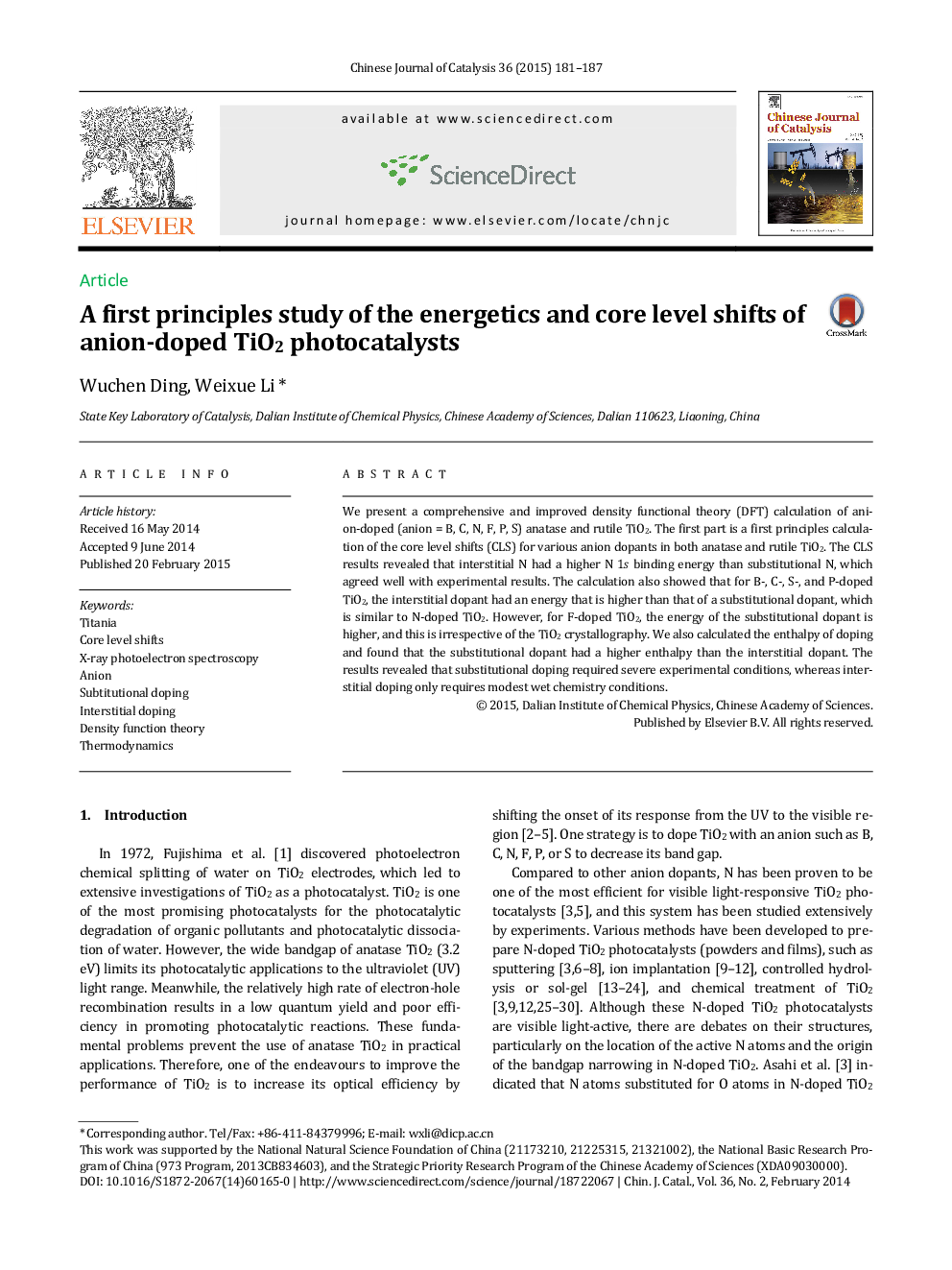| Article ID | Journal | Published Year | Pages | File Type |
|---|---|---|---|---|
| 59262 | Chinese Journal of Catalysis | 2015 | 7 Pages |
We present a comprehensive and improved density functional theory (DFT) calculation of anion-doped (anion = B, C, N, F, P, S) anatase and rutile TiO2. The first part is a first principles calculation of the core level shifts (CLS) for various anion dopants in both anatase and rutile TiO2. The CLS results revealed that interstitial N had a higher N 1s binding energy than substitutional N, which agreed well with experimental results. The calculation also showed that for B-, C-, S-, and P-doped TiO2, the interstitial dopant had an energy that is higher than that of a substitutional dopant, which is similar to N-doped TiO2. However, for F-doped TiO2, the energy of the substitutional dopant is higher, and this is irrespective of the TiO2 crystallography. We also calculated the enthalpy of doping and found that the substitutional dopant had a higher enthalpy than the interstitial dopant. The results revealed that substitutional doping required severe experimental conditions, whereas interstitial doping only requires modest wet chemistry conditions.
Graphical AbstractCore level shifts in B-, C-, N-, S-, or P-doped TiO2 are such that the energy of an interstitial dopant is higher than that of a substitutional dopant, but for F-doped TiO2, the energy of the substitutional dopant is higher.Figure optionsDownload full-size imageDownload as PowerPoint slide
